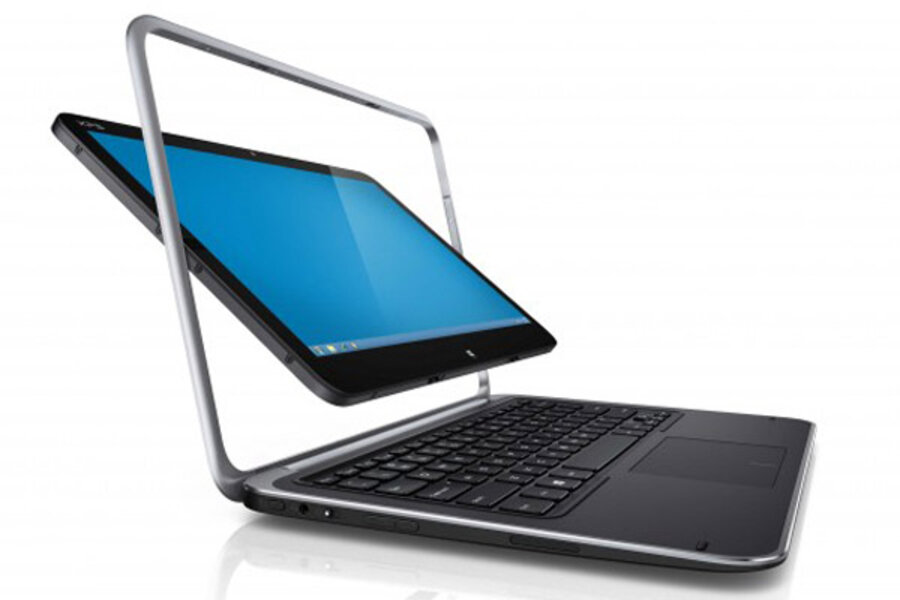Ultrabooks learn to twist, twirl, tilt – and compete
Loading...
Laptops have functioned like, well, laptops for so long that it’s a little bit of a shock when you find one with a trick up its sleeve.
You touch the screen, and it responds like a tablet. Maybe you open the laptop’s lid, and it keeps on opening -- all the way around, until it’s lying flat against the underside of the computer. Or maybe you slide the keyboard out from under the screen when you need it, and return to touch input when you’re just browsing online.
These are the kinds of features found in a nifty new class of computers called Ultrabook convertibles. You might remember the Ultrabook – the line launched last year as a collection of thin-and-light laptops powered by Intel Core chips. At the time, it might have been considered the PC world’s response to the Macbook Air.
Now, as manufacturers have had more time to consider how to make laptops truly portable, they’ve come up with a range of designs that are actually unique. With so many swivelling, spinning screens, you might mistake the PC section of a Best Buy for a circus.
The Lenovo Ideapad Yoga, for example, has a hinge that allows the screen to fold around so it lies flat on the back of the keyboard. Turn the machine over (the keyboard turns off automatically) and you’ve got a tablet, albeit one with a big 13-inch display. The Dell XPS Duo 12 (pictured, above) has a touchscreen that turns vertically within its bezel – so you can flip the screen up to use it as a tablet while it’s resting on the keyboard deck. The ASUS Taichi has two screens, one on each side of the lid, and you can flip between them with a touch. All of the Ultrabook convertibles run Windows 8, which is designed to work on computers and tablets alike, and – blessedly – all have a full range of useful ports, including USB and HDMI.
The reason there are so many different Ultrabook designs is that customers can’t decide on just one, says Merlin Kister, Intel’s director of consumer PC brand strategy management.
“Some people liked having a screen that flips over and some people liked just having two displays,” he says, “so each manufacturer has staked out a different niche.” That’s no exaggeration: In addition to spinning and swivelling models, there are also Ultrabooks that can slide open like giant phones, or open to lay perfectly flat, or fold into other interesting configurations.
The new crop of Ultrabooks also have some welcome under-the-hood improvements. Intel bakes anti-theft technology into the processors, so you can lock or wipe the machine remotely if it gets stolen – even if the hard drive is replaced. And the company is also rolling out identity protection that authenticates websites against your specific machine, providing a measure of safety even if a password gets stolen.
Ultrabook convertibles can get pretty pricey – the flagship models are generally a hair over $1,000 – and for many people a traditional laptop is still just fine.
But it’s undeniably cool – and actually useful – to switch back and forth between laptop and tablet mode on one device. Browse Web pages with touch gestures; write thoughtful emails with a hardware keyboard. While the technology still needs to mature a bit, these devices feel like meaningful steps toward a future in which portable devices are neither only laptop nor only tablet – instead, they conform themselves to meet the need at hand.








